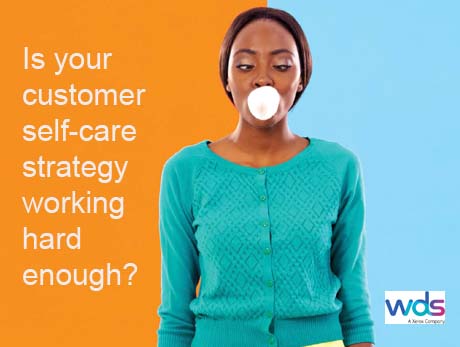
October 4 2014: Customers are changing, they’re becoming more digital. These behavioral changes leave footprints, digital footprints, in the data they generate or leave behind, and by 2020 global data is set to total over 40ZB; that’s x40 more than it was in 2010.
But it’s not just behavior that’s changing; digital care expectations are changing too and they’re surpassing what’s being delivered by today’s self-care. In fact, 30% of customers say that they think self-care is not working hard enough.
That’s probably because approximately 40% of the problems experienced by customers are not represented up on digital self-care channels, as such, 20% of customers calling the contact center are doing so because they failed to get their answer online.
In their latest industry briefing, WDS, a Zerox company, outline the opportunities and challenges facing the care industry as self-care deployments scale to meet the needs of today’s customers.
Self-care is now an integral part of the care mix. However, many companies are finding that existing deployments are ill-prepared to meet the change in customer demands; lacking the data analytics, sentiment analysis or machine learning capabilities required tomeet ever aggressive call deflection and customer satisfaction targets.
Most companies are finding themselves under increasing pressure to contain their customer care costs; often having to do so while targeted with retaining customers through service excellence.
It’s unsurprising then that many of these companies, typically reliant on customer care operations burdened with a heavy cost infrastructure and an ageing business model, have jumped quickly to embrace digital, self-care channels as a way of servicing their customers.
These digital care channels, ranging from webforums and virtual agents to smartphone apps and social media, are now a common part of the care mix and, deployed correctly, are typically able to service a care transaction up to 98% more cost effectively than a call to a contact center.
Unfortunately, the goal to reduce care costs by deflecting traffic away from expensive contact center resources and into self-care environments is not happening at the pace originally anticipated.
In fact, despite the industry’s best efforts, satisfaction and resolution rates across many self-care tools are lower than they are for the traditional contact center (which remains the most common method for customers to engage with customer care).
In addition, WDS analysis has discovered that up to 20% of call volume in today’s contact centers is actually “fall-back” traffic following a failed selfcare interaction. Factors such as this maintain an artificially high call volume and mean that the current forecast is for voice traffic to remain the majority for most companies until 2016.
The message for companies is clear. A blended, multi-channel approach to care is an essential component for today’s business. However, the care mix should be structured to balance convenience and personalization.
Link to full study here